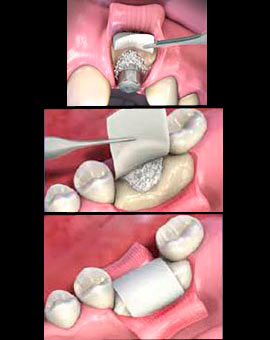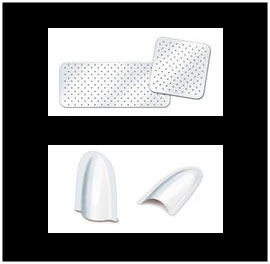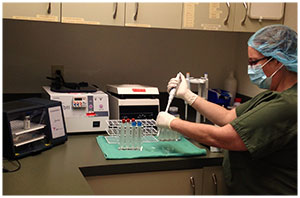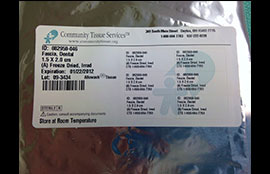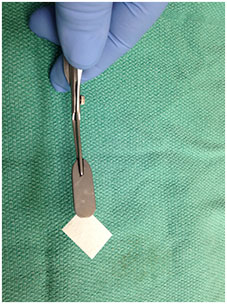
A natural and predictable way to improve regeneration of oral and dental tissue loss is the use of natural or synthetic, biocompatible, resorbable membranes. These are generally used in conjunction with bone products and autogenous products for ridge augmentation, extraction sockets, sinus augmentation/elevation and other soft and hard tissue reconstruction procedures. Natural biocompatible resorbable membranes have excellent protective capabilities and great handling properties. Membranes inhibit epithelial down growth and infiltration of connective tissue fibroblasts which occur earlier than the consolidation of the bone grafting material being used. Therefore, these membranes are used to preferentially help insure that bone can organize, mature and harden before soft tissue cells infiltrate the graft thus making it weaker. Barrier membranes conform to the graft site without memory allowing them to be used as a space maintainer for these bone grafting procedures to restore the loss volume of the tissue being reconstructed.
Resorbable membranes can be of alloplastic, allogeneic, xenographic or synthetic in their constitution. Therefore, membranes can either be made synthetically or come from human or bovine origin. Normally, most of the synthetic membranes have to be removed in a secondary procedure, and hence patients and doctors are less likely to want to use these because of the need to surgically intervene secondarily to remove them. Recently however, synthetic poly-D-lactic acid (PLA) membranes are being used which do not require removal since these resorb in about two to three months, and are as sturdy as synthetic nonresorbable membranes. Most of the membranes used today are of bovine (xenograft) collagen origin, although human fascia (allograft) which will last longer, can also be used since it has similar properties as the bovine membranes. Collagen membranes are used for predictable, extended resorption times, and they handle similarly to soft tissue while maintaining their integrity for about 3-5 months. Resorbable membranes consist of an organic, meshwork-type matrix of long, interwoven, cross-linked collagen fibers which enhances its tensile strength and are designed for sufficient pullout strength, a desired property of all membrane barriers.
Rejection or foreign body reactions are hardly ever seen because all protenacious material which is generally responsible for mounting a foreign body reaction (rejection) is removed. In addition, all these products come from either CLIA certified (Clinical Laboratory Improvement Amendments) tissue banks which ensure the quality of laboratory testing, or from reputable manufactures which adhere to stringent guidelines of laboratory tissue processing procedures to insure proper safety of clinical use and distribution of their products.
